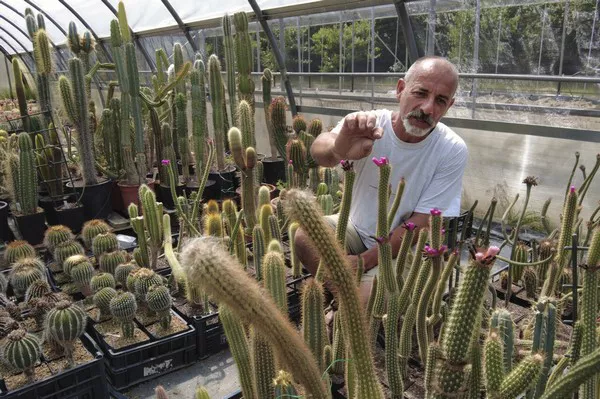Cactus enthusiasts, both seasoned and novice, often encounter the vexing issue of cactus rot, a condition primarily triggered by bacterial and fungal infections, and sometimes even viral agents. This common problem demands a proactive approach for prevention and treatment.
Root Causes of Cactus Rot:
Cactus rot can be attributed to various factors, with bacteria, fungi, and viruses playing leading roles. To safeguard your prized cacti from this affliction, consider the following crucial insights:
1. Winter Rest Period:
In regions with cold winters, it’s essential to provide your cacti with a rest period in a cool environment. This mimics their natural habitat and encourages healthy growth.
2. Seasonal Watering:
Adapt your watering routine to the seasons. During winter, reduce watering significantly, as cacti require less moisture in cooler temperatures. Overwatering in winter can lead to stagnant water that fosters rot.
3. Beware of Underwatering:
Paradoxically, inadequate watering during the active growing season in spring and summer can harm your cacti. Neglecting proper hydration can result in dry roots and a weakened root system, making the cactus susceptible to rot during the winter months.
4. Well-Draining Soil and Proper Potting:
Cacti thrive in rocky, well-draining soil and pots equipped with drainage holes. Avoid fertilizing with organic-rich materials like manure, as overly moist soil can become a breeding ground for rot-causing pathogens. Stagnant air, high humidity, and low temperatures further exacerbate the risk of waterlogged soil.
5. Repotting Caution:
When repotting your cactus, exercise caution to prevent root and stem damage. Even minor cuts or injuries can pave the way for rot. It’s crucial not to water your cactus for up to a week before and after repotting to reduce the risk of infection.
6. Wound Disinfection:
Should you inadvertently injure your cactus, its roots, or create open wounds, promptly apply activated charcoal or a suitable disinfectant to prevent bacterial and other infections from taking hold.
7. Proper Drying After Root Maintenance:
After washing the roots, it’s imperative to allow your cactus to dry thoroughly. Hang it vertically or place it in an empty pot to facilitate efficient drying.
By adhering to these preventive measures and maintaining a vigilant eye on your cacti’s well-being, you can mitigate the risk of rot, ensuring that your beloved plants thrive and grace your space with their enduring beauty.


